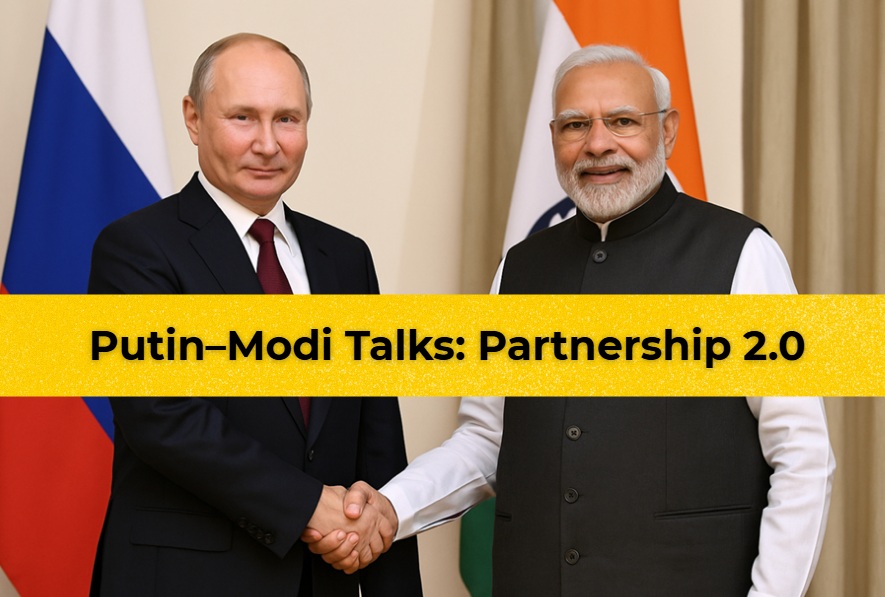
A deadly car explosion near Delhi’s historic Red Fort has triggered national outrage and a chilling new conversation about “white-collar terrorism” — a term gaining traction after early investigations revealed links between the attack and highly educated professionals, including doctors and engineers.
Speaking from Bhutan, Prime Minister Narendra Modi issued a strong warning to the perpetrators, declaring that “those behind this conspiracy will not be spared” and promising swift justice.
🔥 The Blast That Shocked the Capital
On the evening of November 10, a parked car exploded near the Red Fort Metro Station, killing and injuring several people during peak hours. The explosion tore through a crowded, iconic area of Old Delhi, sending shockwaves across the nation.
The case was swiftly handed over to the National Investigation Agency (NIA), with forensic teams combing through CCTV footage, residue samples, and digital communications to piece together the origins of the blast.
🧠 The White-Collar Twist — Educated Minds, Dark Intentions
What makes this attack stand out is the profile of those allegedly involved. Investigators have detained multiple doctors and professionals from Delhi, Haryana, and Jammu & Kashmir, suspecting them of logistical and technical roles in the blast network.
Authorities say one of the main suspects, a Kashmiri doctor, had stored hundreds of kilograms of ammonium nitrate in a Faridabad warehouse. Raids across several states unearthed caches of explosives, detonators, and sophisticated timers — all pointing to a coordinated and professionalised terror module.
Security analysts are calling this a “white-collar terror network” — cells that leverage educated recruits with access to laboratories, chemicals, financial systems, and global communication tools.
“These are not street operatives — these are trained, credentialed individuals using their skills to weaponize ordinary materials,” a senior counter-terror officer told The Times of India.
🧩 What Investigators Have Found So Far
- Large quantities (Approx 4000 Kg) of explosive precursors, including ammonium nitrate, recovered from Faridabad and adjoining areas.
- Links being probed to Pakistan-based outfits such as Jaish-e-Mohammed (JeM) and Islamic State Khorasan Province (ISKP).
- Digital forensics uncover encrypted communications and money trails spanning multiple states.
- UAPA charges filed; the NIA treating the incident as part of a multi-state, transnational conspiracy.
🛡️ Government’s Response: “No One Will Be Spared”
From Thimphu, PM Modi reiterated India’s zero-tolerance policy on terrorism, directing agencies to fast-track the investigation.
Home Minister Amit Shah personally visited the blast site and hospitals treating victims, stating that “India will respond with resolve, not rhetoric.” Defence Minister Rajnath Singh has also reviewed security preparedness across key metros.
Security has been ramped up in Delhi, Mumbai, and Hyderabad, with chemical precursor sales under new scrutiny.
🌐 The Cross-Border Dimension
While India has not made any formal diplomatic accusations yet, several officials and media reports have pointed to possible coordination with Pakistan-based handlers.
Interestingly, a near-simultaneous blast in Islamabad has complicated narratives, with both nations trading subtle insinuations. Intelligence agencies are working to establish digital and forensic linkages before naming any external actor officially.
🧬 Why White-Collar Terrorism Demands New Policies
Experts say this marks a new phase in terrorism — one where educated insiders exploit legitimate institutions, labs, and procurement chains for violent ends.
1. Access and Cover:
Professionals can buy or move dual-use materials like chemicals without triggering red flags.
2. Technical Proficiency:
With access to labs and scientific knowledge, such operatives can create more potent or unpredictable explosives.
3. Encrypted Radicalisation:
Digital grooming through encrypted apps allows these networks to operate beneath conventional intelligence radar.
As one senior NIA official put it, “We’re now fighting ideologies armed with degrees and data.”
⚖️ The Legal Tightrope
The government’s hardline stance — including mass detentions and UAPA charges — enjoys public support. But experts warn that overreach or profiling professionals without watertight evidence could backfire.
Legal scholars urge that investigations remain transparent, evidence-based, and judicially supervised to protect both security interests and civil liberties.
🔭 What Lies Ahead
- NIA and state agencies will continue tracing digital and financial footprints.
- Tighter regulations are expected on chemical and laboratory procurement.
- AI-driven surveillance tools may be deployed to track suspicious communication clusters.
- Political and diplomatic fallout could escalate if external links are confirmed.
For now, the government’s message is clear: India will not tolerate terror in any form — blue-collar or white-collar.
🧩 The Bottom Line
The Red Fort blast is more than just another terror incident — it’s a wake-up call to the evolving face of extremism in the digital and professional age.
White-collar terrorism blurs the line between legitimate intellect and lethal ideology — and forces India’s counter-terror framework to evolve beyond guns and bombs, into labs, laptops, and ledgers.
As PM Modi put it, “Those who think their education or profession will shield them are mistaken — the law will catch up with every conspirator.”
Keywords
Red Fort Blast, Delhi Explosion, White Collar Terrorism, PM Modi Statement, NIA Investigation, Educated Terrorists, Ammonium Nitrate Seizure, Faridabad Raid, Jaish-e-Mohammed Links, ISKP Module, Professional Terror Network, India Terror Alert
Reference:





